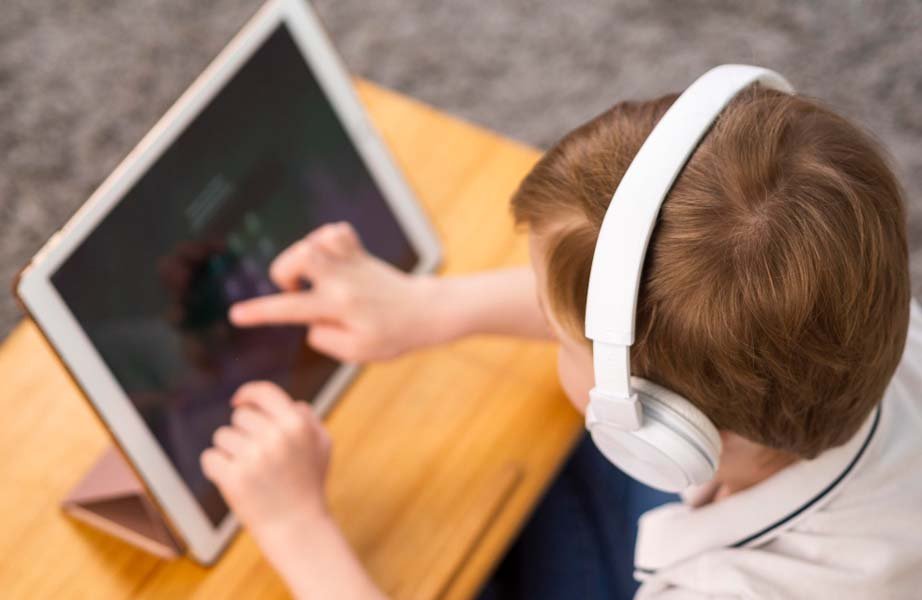Digital literacy skills have recently been a big concern. This is because, in the digital age, we are currently experiencing, our children are growing up in an environment where technology is becoming more and more popular.
While there are many advantages to this, it’s essential to make sure your child has the knowledge as well as the abilities needed to use technology appropriately.
What is digital literacy in the age of technology?
Digital literacy is the ability to effectively use digital technologies, such as computers, the internet, and other forms of digital media, to access, analyze, create, communicate, and share information. It is a critical skill in today’s world, where technology is increasingly used as a tool to facilitate learning and problem-solving. In the age of technology, digital literacy is no longer a “nice to have”, but a “must-have” skill. It is essential to success in the modern workplace and to understanding the world around us. Digital literacy helps us to think critically, make informed decisions, collaborate effectively, and create and share meaningful content.
An example of using digital literacy in the age of technology would be using a smartphone to research a specific topic. This requires the ability to use the internet, search for reliable sources of information, evaluate the accuracy of the information, and interpret the results. Additionally, it requires the ability to apply the results to a real-world problem or situation.
By learning these abilities, kids will be more prepared to participate in the digital world. They will be able to keep up with the latest developments in technology and acquire the skills needed to be successful in the rapidly evolving world of today.
Digital literacy skills
- Online Research and Evaluation: The ability to use the internet to find, evaluate, and use information
- Basic Computer Literacy: The ability to use computers and their software, including the basic components of the operating system and the use of a mouse and keyboard.
- Digital Communication: The ability to communicate effectively with others using digital tools, such as email, social media, video conferencing, and text messaging.
- Media Creation and Manipulation: The ability to create and manipulate digital media, such as images, videos, audio, and webpages
- Data Security and Privacy: The ability to understand and protect personal data, including passwords and other sensitive information, against potential threats
- Networking: The ability to use digital tools to connect, collaborate, and share with others online.
- Coding and programming: the ability to write and understand code to create and modify digital products
- Digital Rights and Responsibilities: The ability to recognize and respect the rights, responsibilities, and laws associated with using digital technologies
- Digital Commerce: The ability to use digital tools to purchase, sell, and conduct business online
Critical Thinking and Problem-Solving Through Technology
Critical thinking and problem-solving through technology are ways to explore, evaluate, and evaluate potential solutions to complex situations. It involves the use of technology, such as computers and software, to analyze data, create models, and develop solutions.
The process of creative thinking and problem-solving involves breaking down a problem into its components, analyzing the situation, and developing a strategy for solving it.
Computers and software can help automate and streamline this process, allowing for quicker and more accurate answers.
Technology can help reduce the amount of time it takes to solve a problem and can provide more accurate results. Technology can also help reduce the amount of human error that can occur in the process of critical thinking and problem-solving. Technology can help generate new ideas as well as test and refine existing ones.
Computer simulations, artificial intelligence, and robotics are all technologies that can be used to help analyze and solve problems. Computer simulations allow for the testing of multiple solutions and scenarios, while artificial intelligence can be used to learn from past successes and failures. Robotics can help automate many of the tasks associated with problem-solving, such as data entry, analysis, and decision-making.
Technology can also help provide additional support and resources to help with critical thinking and problem-solving. Examples of this include online databases, tutorials, and courses. The use of technology also allows for collaboration on a larger scale, allowing for the exchange of ideas and problem-solving techniques between people from different backgrounds and cultures.
Overall, technology can be a powerful tool for critical thinking and problem-solving. Technology can help streamline the process, reduce human error, generate new ideas, and provide additional resources and support. Technology can also help facilitate collaboration, allowing for the exchange of ideas and problem-solving techniques between people from different backgrounds and cultures.
What Are the Differences Between Traditional and Digital Literacy?
Traditional literacy is the ability to read and write using traditional forms of communication such as books, newspapers, and other printed materials. Digital literacy is the ability to use digital technology to access and interpret information, create content, and communicate effectively with others.
Traditional literacy focuses on reading and writing, while digital literacy focuses on technology and the ability to access, interpret, and share digital information. Traditional literacy typically involves paper-based sources of information, while digital literacy includes web-based sources such as websites, blogs, and social media.
Traditional literacy requires an understanding of grammar, punctuation, and vocabulary, while digital literacy requires knowledge of coding, software, and computer networks. Traditional literacy is typically taught in school, while digital literacy is often acquired through experience.
How to Encourage Positive Use of Technology by Kids
- Set Clear Rules and Expectations: Set clear rules and expectations around technology use, including when and how long it is appropriate to use devices, what sites are OK to visit, and what activities are acceptable.
- Establish a Tech-Free Zone: Establish a tech-free zone in your home, such as the kitchen table or living room, where tech devices are not allowed.
- Model Responsible Technology Use: Show your children how to use technology responsibly and in moderation.
- Provide Positive Reinforcement: Praise your children for positively using technology, such as for educational purposes rather than for games or entertainment.
- Schedule Technology Breaks: Encourage your children to take regular breaks from technology.
- Encourage Non-Tech Activities: Encourage your children to engage in non-tech activities, such as outdoor play or reading.
- Monitor Technology Use: Monitor your children’s technology use to ensure that they are using it responsibly.
- Use Parental Controls: Utilize parental control tools to limit access to inappropriate websites and content.
- Limit Technology at Bedtime: Limit technology use at bedtime, as using technology before bed can disrupt sleep patterns.
Benefits of Digital Literacy Education for Kids

- Improved communication skills: Digital literacy provides kids with the skills to communicate effectively in a digital world. By engaging with digital media, kids are exposed to a range of ways to communicate, such as video, email, instant messaging, and social media. This helps them to develop their communication skills, allowing them to express their ideas more confidently and effectively.
- Problem-solving skills: With digital literacy, kids can develop problem-solving skills that will be beneficial to them in the future. They learn to use technology to find solutions to problems, and this helps them to become more independent and self-sufficient.
- Increased creativity: Digital literacy provides a platform for kids to express their creativity and imagination. With access to different digital tools, kids can explore their creative side and learn how to create and share content creatively.
- Improved collaboration skills: Digital literacy allows kids to collaborate online, enabling them to share ideas and work together on projects. They gain experience working as part of a team, which is an important skill for the workplace.
- Enhanced critical thinking: Digital literacy encourages kids to think critically about the content they are viewing and using. This helps them to develop their critical thinking skills, allowing them to form their own opinions and make informed decisions.
Conclusion
In the modern world, having strong digital literacy skills is crucial for kids. Children must acquire the fundamentals of digital literacy at a young age as technology develops and becomes an increasingly significant part of our lives.
Employers are looking for workers who are proficient in using computers, conducting web searches, writing documents, making presentations, and performing computations quickly. Kids will fall behind in the workforce if they are not exposed to this sort of knowledge by an instructor while they are still in school.
We can provide kids with the fundamental abilities they need to succeed in the digital world by teaching them digital literacy skills.




